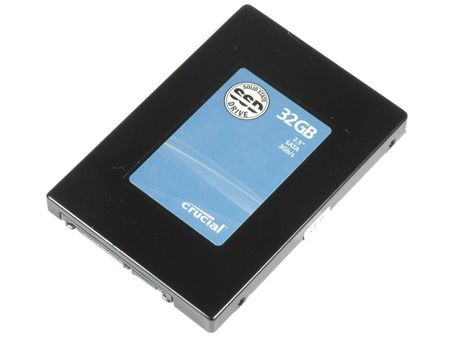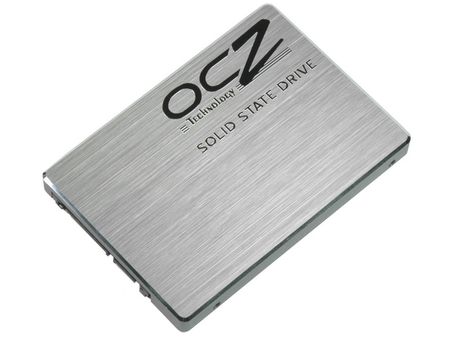Flash SSD Update: More Results, Answers
Flash SSDs
Crucial Flash SSD
We used the Crucial Flash SSD for our initial article and we tested it again with our new suite. This drive is a good example of the early-generation Flash SSDs that are not capable of delivering better efficiency than magnetic hard drives. It provides slightly better streaming read performance per watt than hard drives, but it requires more power for all other types of activity.
Mtron Flash SSD
Unfortunately, we had to return the MemoRight Flash SSD drive, but Mtron’s Flash SSD, which had been the second fastest, is still in our test lab. This drive is an example of a performance Flash SSD designed to deliver maximum performance regardless of power consumption. And it delivers accordingly, providing three times more workstation I/O operations per second than the mechanical hard drives, also tripling performance per watt in this category. It’s still slightly more efficient for streaming reads, which leads to twice the performance per watt. However, the power requirement during DVD playback equals the idle power, making it the least efficient choice for defined streams such as DVD video playback, or for having it idling.
OCZ SATA II 2.5” SSD
This is the latest Flash SSD we received and we were excited to see it in action. Unfortunately, OCZ did not select a catchy product name, as almost all Flash SSD products from various vendors are simply called Flash SSD. OCZ’s latest product, which will arrive soon, will have a decent name and retail as its Core series.
The drive is based on Samsung’s current SLC Flash SSD and a modern second-gen SATA interface. We already mentioned the better energy efficiency attributes of a native interface, but the test results are truly enlightening. What the OCZ SATA II 2.5” SSD is able to do beats everything else — both the Flash SSDs and all of the mechanical hard drives.
Get Tom's Hardware's best news and in-depth reviews, straight to your inbox.
Sandisk Flash SSD
We also still had the SanDisk Flash SSD, which in fact is a very efficient choice. However, its performance is not impressive. All of the mechanical hard drives provide better random I/O performance and much better streaming read performance. Thanks to the SanDisk’s low overall power requirements, which in fact are the lowest of all drives tested here, it does manage to achieve acceptable performance-per-watt results. This drive will help to increase your battery runtime if you aren’t as concerned about performance.
Supertalent Masterdrive MX
Lastly, Super Talent’s MasterDrive MX arrived just in time for this update article. It is a second-generation SATA model that promises good performance and power efficiency. And it delivers. The performance-per-watt result is twice that of the mechanical hard drives for streaming reads, but it’s not necessarily superior to all mechanical hard drives in the random I/O test, as the new Seagate Momentus 5400.5 shows. And it does not beat the low power requirement of Hitachi’s Travelstar 7K200 for DVD playback and when idle.
Current page: Flash SSDs
Prev Page The Tests: Random, Sequential, DVD and Idle Next Page Hard Drives: Hitachi, Samsung



